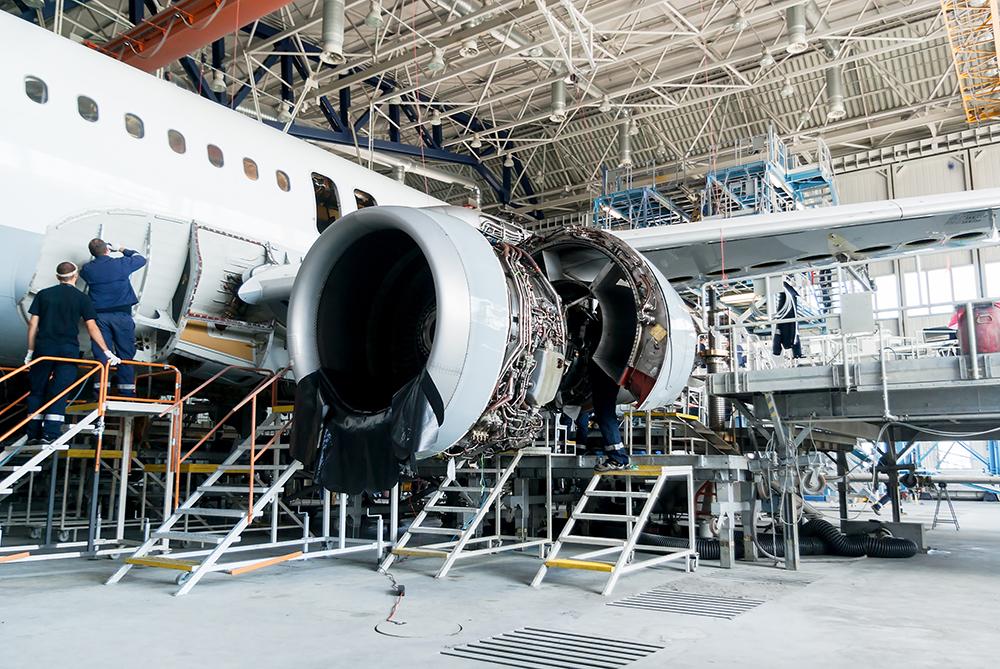
Commercial aviation operations and passenger traffic are about halfway back to pre-COVID levels as the aviation industry continues into recovery—and MRO shops are beginning to fill up.
According to RadarBox, daily commercial flights averaged more than 77,000 in the second week of January 2022 versus more than 101,000 fights in same-period of 2020 and 55,000 at the start of 2021.
Cargo flights have gained the most. IATA reports ton-kilometers rose more than 8% in October 2021, versus October 2020, with growth slowing a little in November as supply chain issues, congestion at airports and capacity misallocation temporarily trimmed the ongoing cargo boom.
In passenger markets, domestic flying has rebounded fastest, especially in some very large nations. For example, U.S. domestic flights were off only 11% from 2020 levels in the second week of January. Chinese domestic flights stood at 80% of 2020 levels, while Indian domestic flights were 70% of pre-COVID levels. All three markets had been even closer to their pre-COVID paces before a slight dip early this year.
Even cautious Europe, with all those complex borders, rules and quarantines, showed strength. Intra-Europe daily flights were at 70% of pre-COVID levels in the second week of January.
In Brazil, where flu concerns have been eased by the summer season in most of the country, domestic daily flights were averaging 97% of pre-COVID levels by mid-January.
International passenger flying has been hardest hit, especially in Asia-Pacific, where many countries shut down cross-border travel fast in 2020 and have been reluctant to reopen it. The Association of Asia-Pacific airlines reports international seat capacity in November was barely 17% of pre-COVID capacity and load factor on this slim capacity was an anemic 34%.
However, RadarBox estimates U.S. international flights—both cargo and passenger—were at more than 80% of pre-COVID levels by mid-January. U.S.-Latin American operations were actually above January 2020 levels and European routes were doing decently, but U.S.-Asian flying is still lagging.
Europe to non-Europe flights have recovered to more than 75% of pre-COVID levels, but Europe to Asia operations were still weak in mid-January.
The strength of the recovery in the U.S. explains why “. . . finding slots for aircraft C checks and engine shop visits is pretty tough . . .” according to Jonathan Berger, managing director of Alton Aviation Consultancy. “Thus, most MROs are near capacity and therefore have no need to offer discounts to fill up their facilities.”
The same optimism is shared in other markets that have recovered strongly. For example, Carlos Alberto Costa, director of Brazil’s GOL Aerotech, says, “The demand for heavy checks, ranging from C2 to C4 for narrowbody A320s and 737s, surged these past few months.”
Though it is still a very uneven and partial recovery, shops are getting busier around the world, with work required from current flying or deferments from during the deepest part of the slump.





